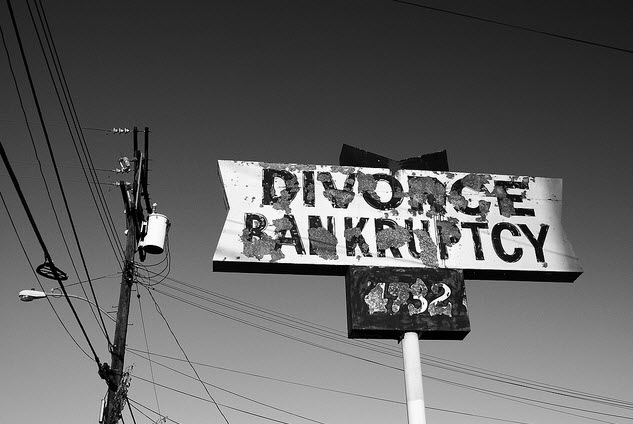 Many of those considering bankruptcy wonder if they too must file bankruptcy if their spouse does. In truth, they do not. Although it’s sometimes a good idea for both spouses to file on a joint petition, it is not always necessary. For instance, a joint filing means paying only one filing fee and will allow both parties to get on with their life (there may be some special property exemptions available in this situation as well).
Many of those considering bankruptcy wonder if they too must file bankruptcy if their spouse does. In truth, they do not. Although it’s sometimes a good idea for both spouses to file on a joint petition, it is not always necessary. For instance, a joint filing means paying only one filing fee and will allow both parties to get on with their life (there may be some special property exemptions available in this situation as well).
In some circumstances, all or most of the debt will be in one spouse’s name. In that case, it may make sense to file one spouse and not the other. Any joint debts (debts that are in both names) can be discharged as to one party, but will leave the non-filing spouse solely responsible for those debts.
Once in a while, I meet a person who hasn’t spoken to or seen their spouse in years. They no longer have joint debts and are in every sense (other than legally), divorced. The courts recognize that this sometimes happens and allow married couples to file bankruptcy individually and allow them to maintain separate homestead exemptions. All that the court requires to do this is that the debtor filing bankruptcy swear that the separate households are maintained for some other reason other than to defraud the bankruptcy court.
 Jacksonville Bankruptcy Lawyer Blog
Jacksonville Bankruptcy Lawyer Blog






 According to Marianne Culhane’s chapter in the collaborative book, “Broke”, 36% of those filing bankruptcy considered divorce or separation as a result of the stress. This is not at all surprising as people often cite “financial difficulties” as a reason for separating. 36% is an enormous number. Less alarming is that the number of people who actually did divorce after bankruptcy was 18%. Still, that’s just short of one out of five couples.
According to Marianne Culhane’s chapter in the collaborative book, “Broke”, 36% of those filing bankruptcy considered divorce or separation as a result of the stress. This is not at all surprising as people often cite “financial difficulties” as a reason for separating. 36% is an enormous number. Less alarming is that the number of people who actually did divorce after bankruptcy was 18%. Still, that’s just short of one out of five couples. When you finance a car, it’s accompanied by a note and there’s a monthly payment. The note gives the seller security, as they now have recourse if you don’t pay -they can repossess the vehicle. This system is good for the seller because their money is backed by an asset instead of backed by your credit score. You can damage a credit score, but you can’t repossess a credit score and sell it to someone else.
When you finance a car, it’s accompanied by a note and there’s a monthly payment. The note gives the seller security, as they now have recourse if you don’t pay -they can repossess the vehicle. This system is good for the seller because their money is backed by an asset instead of backed by your credit score. You can damage a credit score, but you can’t repossess a credit score and sell it to someone else. Tony Alleyne, an avid Star Trek fan converted his UK apartment into a mock set of the Starship Voyager. This was actually done as a business decision, in hopes to entice other “Trekkies” to hire him to decorate their homes in the same way. Unfortunately, he is alleged to have maxed out 14 credit cards with over £100,000 in debt in working on the project. He then filed bankruptcy.
Tony Alleyne, an avid Star Trek fan converted his UK apartment into a mock set of the Starship Voyager. This was actually done as a business decision, in hopes to entice other “Trekkies” to hire him to decorate their homes in the same way. Unfortunately, he is alleged to have maxed out 14 credit cards with over £100,000 in debt in working on the project. He then filed bankruptcy. Chase has been accused of filing false claims in bankruptcy cases, with allegations that their attorneys have gone so far as to Photoshop documents to increase the ease of obtaining relief from the
Chase has been accused of filing false claims in bankruptcy cases, with allegations that their attorneys have gone so far as to Photoshop documents to increase the ease of obtaining relief from the  In 2008 John Ignatius Quinn was declared the richest person in Ireland with holdings worth approximately $6 billion dollars. Now, three years later, he finds himself facing bankruptcy.
In 2008 John Ignatius Quinn was declared the richest person in Ireland with holdings worth approximately $6 billion dollars. Now, three years later, he finds himself facing bankruptcy.